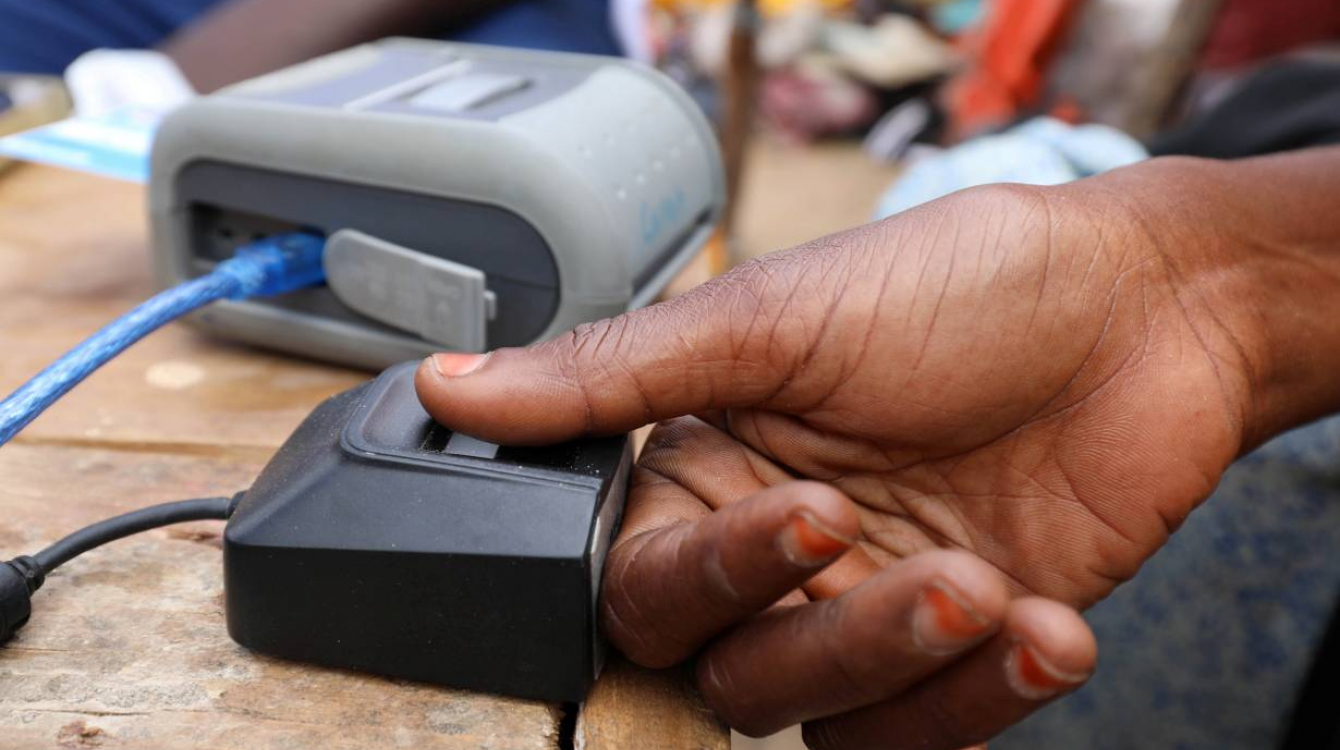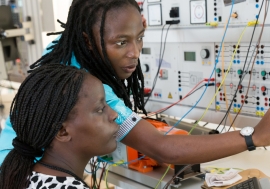From the spread of digital apps, like the Nigerian-based FarmCrowdy, which is helping farmers utilize technology to improve their operations, to Mpesa – the mobile money in East Africa, to the millions of mobile phone connections in sub-Saharan Africa, bypassing fixed-telephone line services, there are countless examples of how technology is transforming Africa.
The continent has embraced biometrics technology. By measuring people’s unique physical characteristics, typically through fingerprint, facial or iris recognition, biometric solutions can easily authenticate identity.
The Africa and Middle East biometrics market is forecast to grow at an annual rate of 21%, with the global biometrics industry set to reach US$82 billion by 2027, according to the “Biometrics – Global Market Trajectory & Analytics 2020” report published by US-based research firm Global Industry Analysts.

For governments, it’s not difficult to understand the attraction of biometric identification. In Zimbabwe, for example, after the Public Service Commission introduced a biometric system and ran an audit in 2020, in collaboration with the World Bank, they found 3,000 so-called ‘ghost workers’ and removed them from the payroll hence saving the country some money.
Other countries are looking into deploying biometric technology beyond the government sector. For example, in Kenya, the company Mission Excellence Global Service Ltd, which provides business solutions in healthcare and education using technology, has partnered with the Indian start-up Invento Robotics to deploy ‘Robodocs’. The machines create a remote connection to doctors and can take details of a patient’s temperature readings and pulse rates, using facial recognition to establish a unique patient record.
“Biometrics, when integrated into robust service delivery programmes, can help government agencies and businesses verify their impact,” explains Christine Kim, Head of Strategic Partnerships at Simprints, a UK-based non-profit technology firm that builds biometric systems for organisations and governments in developing nations.
“By enabling better quality data, reducing duplicate and lost patient records, and providing a reliable count of how many and which individuals accessed services (versus which have fallen through the cracks), biometrics can be leveraged to ensure every single person is reached and that interventions have their maximum impact,” adds Ms. Kim.
Additional challenges
The potential for biometrics to prevent fraud, improve data security and provide identification to citizens is clear. Yet, there are several barriers to wider adoption of biometric technologies across the continent.
“A number of biometric registration laws are too complicated and not adapted to the modern world. In some cases, people have to produce physical documents as opposed to electronic versions,” says Dr. Joseph Atick, the executive chairman of ID4Africa, an American NGO that works with African countries to establish identity ecosystems.
ID4Africa runs a senior-level Ambassadors programme that advocates identity for all in Africa as a driver for socio-economic development, and has so far reached 48 different countries.
According to Dr. Atick other disincentives to signing up for biometric registration include the requirement to provide additional personal information beyond that of the main registrant, such as legal names of parents and grandparents, as well people needing to take time off work to register, usually at a far-off location.
Data privacy advocates are also concerned about the level of protection sensitive personal data will have in some of the biometric ecosystems. Only 24 African countries have introduced laws and regulations to protect personal data.
“Robust data privacy and security are twin challenges that must be addressed, not simply for the widespread adoption of biometrics across Africa, but rather to harness biometrics for the greater social benefit,” adds Ms. Kim.
COVID-19 innovation
African businesses and governments alike have made major advancements in recent years in implementing biometric systems. With almost 50 African nations having issued e-passports, there has been a clear drive to spread the use of biometric-based identification across Africa in recent years. In 2020, the government of Tanzania also made it mandatory for all SIM card users in the country to register their SIM cards biometrically, leading to the vast majority of citizens now having a biometric ID.
However, the outbreak of COVID-19 rapidly changed how governments operate their public services, including how their biometric solutions are administered.
Registration campaigns aimed at increasing uptake of biometric solutions among the general public have been put on hold as physical enrolment is not viable currently.
While some physical biometrics were adapted for safety in mind and contactless solutions introduced, Dr. Atick believes the political will to get these tools into widespread use has been reinforced as the importance of digital identity starts to be seen.
For example, in Togo, the government needed to give cash transfers to help citizens in the informal sector who had been impacted by COVID-19 but majority of them were not in a comprehensive database.
“Togo used its electoral register, which is biometric, to provide cash advances. Citizens just used their phone to register a claim and the government would validate your identity and then they would give you a monthly stipend during the lockdowns,” says Dr. Atick.
Moving forward, innovations in the industry and the post-COVID landscape may motivate more people to participate in using biometric identity tools, and even see users being able to complete the onboarding process at a distance.
In some commercial environments, the appeal of contactless biometrics has boomed since COVID-19. For example, Zimbabwe-based Safeguard Security is now selling biometric systems that utilize facial recognition, instead of just fingerprint ID, to reduce virus transmission.
The power of biometrics to help ensure the most vulnerable people have access to identification and public services is an important benefit too, as seen in Togo stimulus response.
“Standardized identification methods such as biometrics can also enable more robust analytics across programmes and inclusion of persons who otherwise could be invisible in the eyes of institutions [meant to help them],” concludes Ms. Kim.





















